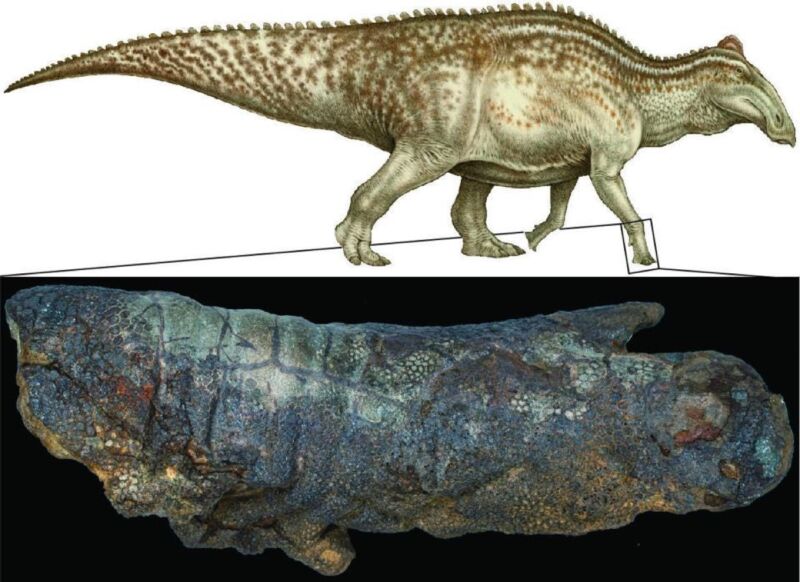There’s more than one way to mummify a dinosaur, study finds

Enlarge / Full-color life reconstruction of Edmontosaurus. (credit: Natee Puttapipat/CC-BY 4.0 )
There's rarely time to write about every cool science-y story that comes our way. So this year, we're once again running a special Twelve Days of Christmas series of posts, highlighting one science story that fell through the cracks in 2022, each day from December 25 through January 5. Today: Why dinosaur "mummies" might not be as rare as scientists believed.
Under specific conditions, dinosaur fossils can include exceptionally well-preserved skin-an occurrence long thought to be rare. But the authors of an October paper published in the journal PLoS ONE suggests that these dinosaur "mummies" might be more common than previously believed, based on their analysis of a mummified duck-billed hadrosaur with well-preserved skin that showed unusual telltale signs of scavenging in the form of bite marks.
In this case, the term "mummy" refers to fossils with well-preserved skin and sometimes other soft tissue. As we've reported previously, most fossils are bone, shells, teeth, and other forms of "hard" tissue, but occasionally rare fossils are discovered that preserve soft tissues like skin, muscles, organs, or even the occasional eyeball. This can tell scientists much about aspects of the biology, ecology, and evolution of such ancient organisms that skeletons alone can't convey.